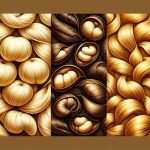Looking for sustainable silk fabric options? You’ve come to the right place! In this article, we’ll introduce you to the top choices for eco-friendly silk.
From organic silk to recycled silk, we’ve got you covered. Discover the benefits of peace silk, ahimsa silk, tussar silk, eri silk, and mulberry silk.
Get ready to make a conscious choice while still enjoying the luxurious feel of silk. Let’s dive in!
Table of Contents
Organic Silk
When considering sustainable silk fabric options, you should look into organic silk, which is produced without the use of synthetic chemicals or pesticides. The benefits of organic silk production are numerous.
Firstly, it promotes the health of both the environment and the workers involved in the silk production process. By avoiding the use of harmful chemicals, organic silk production reduces pollution and minimizes the risk of exposure to toxins. Additionally, organic silk production supports biodiversity by preserving the natural ecosystem and promoting the well-being of the silk-producing insects.
In comparison to conventional silk production, organic silk offers several advantages. Conventional silk production involves the use of pesticides and synthetic chemicals, which can have detrimental effects on the environment and human health. These chemicals can contaminate soil, water, and air, leading to pollution and potential health risks. Organic silk, on the other hand, ensures a more sustainable and eco-friendly approach to silk production.
By choosing organic silk, you’re making a conscious choice to support sustainable and ethical practices. Not only does organic silk benefit the environment, but it also ensures the well-being of the workers involved in the production process.
Peace Silk
To further explore sustainable silk fabric options, let’s delve into the subtopic of ‘Peace Silk’, which offers a humane and ethical approach to silk production. Peace Silk, also known as Ahimsa Silk, is produced without harming or killing silk worms. Unlike conventional silk production, where silk worms are boiled alive to obtain silk filaments, peace silk allows the silk worms to complete their life cycle and emerge from their cocoons as moths.
The fashion industry has recognized the benefits of peace silk and its positive impact on animal welfare. By choosing peace silk, designers and consumers can support cruelty-free practices and promote a more compassionate fashion industry. Additionally, peace silk production provides employment opportunities for marginalized communities, contributing to social sustainability.
Let’s compare the environmental impact of peace silk and conventional silk production in the table below:
| Environmental Impact | Peace Silk | Conventional Silk |
|---|---|---|
| Animal Welfare | High | Low |
| Energy Consumption | Low | High |
| Water Usage | Low | High |
| Chemical Usage | Low | High |
| Carbon Footprint | Low | High |
As the table shows, peace silk has a significantly lower environmental impact compared to conventional silk production. By choosing peace silk, you can contribute to a more sustainable and ethical fashion industry.
Ahimsa Silk
One significant option for sustainable silk fabric is Ahimsa Silk. Ahimsa, which means ‘non-violence’ in Sanskrit, is a method of silk production that prioritizes the well-being of the silkworms. Unlike traditional silk production, where silkworms are boiled alive to obtain the silk fibers, ahimsa silk production allows the silkworms to complete their life cycle and emerge from their cocoons naturally.
The benefits of ahimsa silk are numerous. First and foremost, it aligns with ethical and compassionate principles by avoiding harm to living beings. By allowing the silkworms to live, ahimsa silk promotes a more humane approach to silk production.
Additionally, ahimsa silk has a lower environmental impact compared to conventional silk. The process of boiling silkworms requires large amounts of energy and water, whereas ahimsa silk production is less resource-intensive. Moreover, ahimsa silk retains the same luxurious and durable qualities as traditional silk, making it an excellent choice for conscious consumers who appreciate both style and sustainability.
Tussar Silk
Next, let’s explore the sustainable qualities of Tussar Silk. Tussar Silk, also known as Tussah Silk, is a type of silk produced from the cocoons of wild silkmoths. Unlike mulberry silk, which is derived from silkworms that are reared in captivity, Tussar Silk is harvested from silkworms that are allowed to naturally emerge from their cocoons in the wild. This means that the production process of Tussar Silk is more sustainable, as it doesn’t involve the killing of silkworms.
Tussar Silk is known for its distinctive texture and rich natural color variations, ranging from beige to light brown. The fabric has a slightly coarse and uneven texture, which gives it a unique and rustic appeal. In terms of durability, Tussar Silk is comparable to mulberry silk, making it a long-lasting and sustainable fabric choice.
Furthermore, Tussar Silk is considered to be more eco-friendly compared to mulberry silk. The wild silkmoths that produce Tussar Silk feed on different types of trees, such as oak, arjun, and sal. These trees aren’t only abundant in the wild, but they also require minimal water and chemical inputs for their growth, making Tussar Silk a more sustainable alternative.
Eri Silk
Exploring Eri Silk as a sustainable silk fabric option, you’ll discover its unique qualities and eco-friendly production process.
Eri silk, also known as peace silk or ahimsa silk, is produced by the eri silkworm, which is native to India and parts of Southeast Asia.
Here are three reasons why Eri silk is an excellent choice for environmentally conscious consumers:
-
Ethical production: Eri silk is harvested without harming the silkworms. Unlike traditional silk production, where the silkworms are boiled alive to obtain the silk thread, Eri silk allows the silkworms to complete their life cycle and emerge as moths before the silk is extracted. This ethical production method ensures that no harm is done to the silkworms during the process.
-
Environmental benefits: Eri silk production has minimal impact on the environment. The eri silkworm feeds on leaves of non-mulberry trees, such as castor, oak, or tapioca, which are abundant in the regions where eri silk is produced. This means that no additional resources, such as water or land, are required for the silkworms’ food source, making Eri silk a sustainable option.
-
Versatile fabric: Eri silk is known for its unique texture and thermal properties. It has a soft, cotton-like feel and is highly breathable, making it perfect for clothing and accessories. Eri silk also has excellent insulation properties, keeping you warm in the winter and cool in the summer. Its versatility makes it a popular choice for both casual wear and formal attire.
With its ethical production and environmental benefits, Eri silk is a sustainable silk fabric option that allows you to look stylish while also caring for the planet.
Mulberry Silk
If you’re looking for a sustainable silk fabric option, consider Mulberry Silk for its luxurious feel and eco-friendly production process. Mulberry Silk is widely regarded as the highest quality silk available, known for its softness, durability, and natural sheen. It’s produced by silkworms that feed exclusively on mulberry leaves, hence the name.
The benefits of mulberry silk are numerous. Firstly, it’s hypoallergenic, making it suitable for those with sensitive skin or allergies. Additionally, mulberry silk is breathable, helping to regulate body temperature and keep you cool in the summer and warm in the winter. It also has moisture-wicking properties, keeping you dry and comfortable throughout the day.
There are different types of mulberry silk production. The most common and traditional method is cultivated silk, where the silkworms are raised in controlled environments, fed only mulberry leaves, and carefully monitored. This ensures the quality and purity of the silk. Another type is wild silk, produced by silkworms that feed on a variety of plant leaves. While not as refined as cultivated silk, wild silk still offers many of the same benefits.
Recycled Silk
Moving on to another sustainable silk fabric option, let’s delve into the world of recycled silk. Recycled silk is a great choice for eco-conscious fashion enthusiasts who want to make a positive impact on the environment. Here are three reasons why you should consider incorporating recycled silk into your wardrobe:
-
Benefits of using recycled silk in sustainable fashion: By choosing recycled silk, you’re reducing the demand for new silk production, which often involves harmful chemicals and excessive water usage. Recycling silk not only helps to conserve natural resources but also minimizes waste and decreases carbon emissions. It’s a win-win for both you and the planet.
-
How to incorporate recycled silk into your wardrobe: There are various ways to incorporate recycled silk into your wardrobe. Look for clothing items such as blouses, dresses, and scarves made from recycled silk. These pieces can add a touch of elegance and luxury to any outfit. You can also find accessories like bags and hair accessories made from recycled silk. Don’t forget to check out sustainable fashion brands that prioritize using recycled silk in their collections.
-
Care and maintenance: To ensure the longevity of your recycled silk garments, it’s important to follow the care instructions provided by the manufacturer. Generally, silk should be hand-washed in cold water with mild detergent and laid flat to dry. Avoid exposing it to direct sunlight for extended periods and keep it away from rough surfaces to prevent snagging.
Incorporating recycled silk into your wardrobe not only helps to reduce your environmental footprint but also allows you to make a fashion statement with a conscience. So why not embrace the beauty and sustainability of recycled silk?
Frequently Asked Questions
Are There Any Specific Certifications or Labels That Consumers Should Look for When Purchasing Sustainable Silk Fabric?
When purchasing sustainable silk fabric, you should look for certifications or labels that indicate its sustainability. These certifications and labels assure you that the silk fabric you are purchasing meets certain sustainability standards.
What Are Some Common Misconceptions About the Production Process of Silk That Contribute to Its Environmental Impact?
Common misconceptions about silk production, like thinking it’s always harmful to the environment, contribute to its environmental impact. Educate yourself about sustainable practices and support certified silk options to make a positive difference.
How Does the Price of Sustainable Silk Fabric Compare to Conventional Silk Fabric?
The price of sustainable silk fabric compared to conventional silk fabric depends on availability. However, sustainable options are becoming more accessible and their prices are becoming more competitive.
Can Sustainable Silk Fabric Be Dyed Using Natural and Non-Toxic Methods?
Yes, sustainable silk fabric can be dyed using natural and non-toxic methods. Natural dyeing techniques and non-toxic dye options are available, allowing you to create beautiful and eco-friendly colors on your sustainable silk fabric.
Are There Any Innovative Technologies or Practices Being Developed to Further Improve the Sustainability of Silk Production?
Innovative silk production methods and sustainable silk farming techniques are being developed to improve the sustainability of silk production. These advancements aim to minimize environmental impact and promote ethical practices in the industry.
- Innovations in Moisture-Wicking Textiles - July 18, 2024
- Engineering Fabrics for Optimal Performance - July 18, 2024
- The Science of Breathability in Fabrics - July 18, 2024





